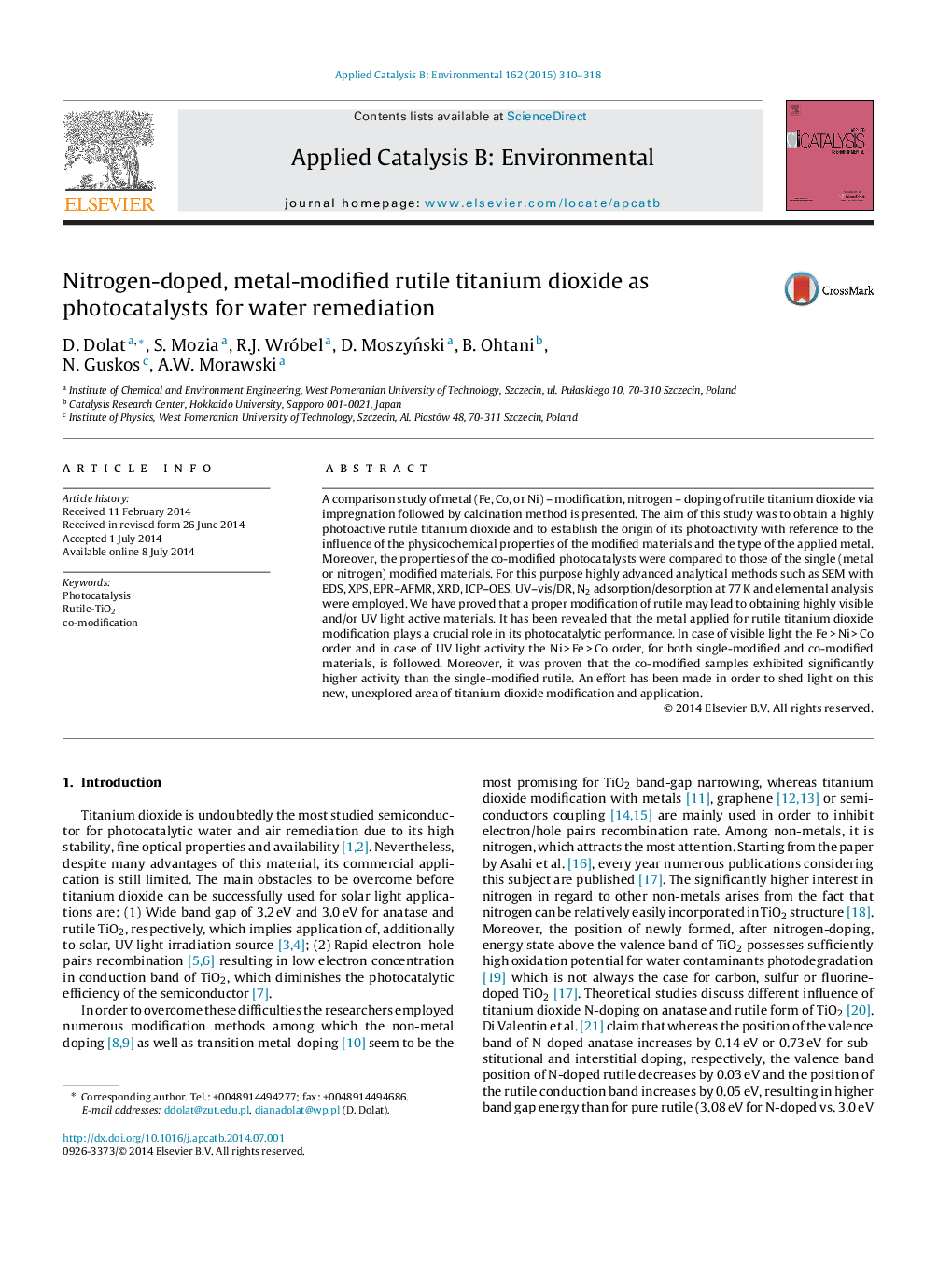| Article ID | Journal | Published Year | Pages | File Type |
|---|---|---|---|---|
| 45651 | Applied Catalysis B: Environmental | 2015 | 9 Pages |
•(Me, N) co-modification of rutile TiO2 via impregnation-calcination method.•Me-single modified and N-single modified rutile was prepared for comparison.•Visible and UV light activity depend strongly on metal applied during impregnation.•Significant photoactivity improvement for co-modification vs. single modification.•Charge transport, surface and bulk properties, plasmon effect influence performance.
A comparison study of metal (Fe, Co, or Ni) – modification, nitrogen – doping of rutile titanium dioxide via impregnation followed by calcination method is presented. The aim of this study was to obtain a highly photoactive rutile titanium dioxide and to establish the origin of its photoactivity with reference to the influence of the physicochemical properties of the modified materials and the type of the applied metal. Moreover, the properties of the co-modified photocatalysts were compared to those of the single (metal or nitrogen) modified materials. For this purpose highly advanced analytical methods such as SEM with EDS, XPS, EPR–AFMR, XRD, ICP–OES, UV–vis/DR, N2 adsorption/desorption at 77 K and elemental analysis were employed. We have proved that a proper modification of rutile may lead to obtaining highly visible and/or UV light active materials. It has been revealed that the metal applied for rutile titanium dioxide modification plays a crucial role in its photocatalytic performance. In case of visible light the Fe > Ni > Co order and in case of UV light activity the Ni > Fe > Co order, for both single-modified and co-modified materials, is followed. Moreover, it was proven that the co-modified samples exhibited significantly higher activity than the single-modified rutile. An effort has been made in order to shed light on this new, unexplored area of titanium dioxide modification and application.
Graphical abstractFigure optionsDownload full-size imageDownload as PowerPoint slide
